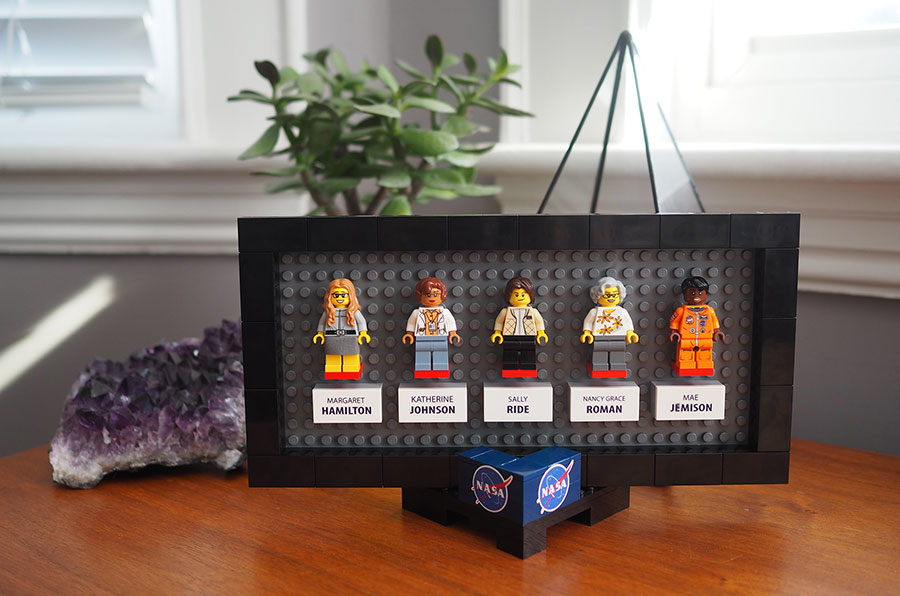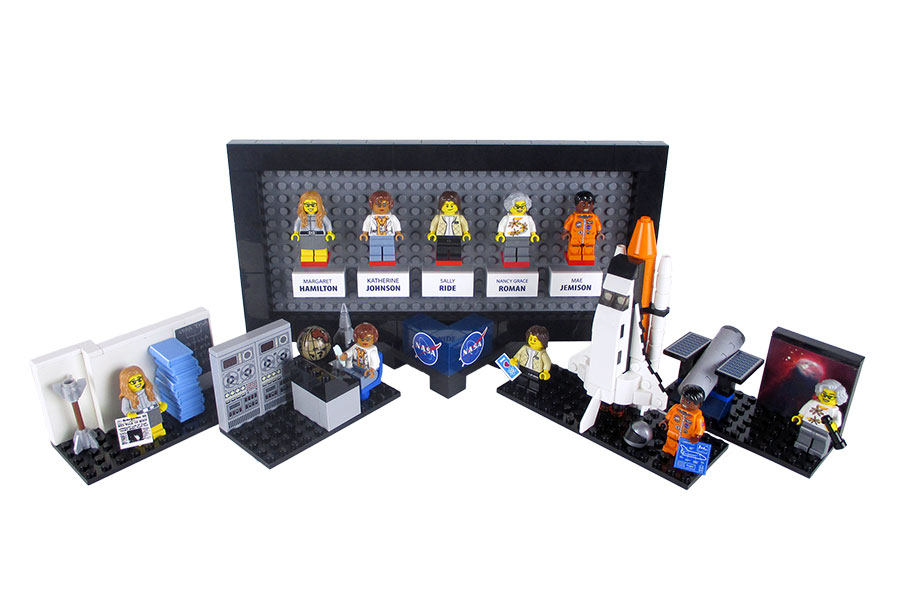Sally Ride, Mae Jemison Among 'Women of NASA' Proposed as Lego Minifigs

They have been launched to the space station and journeyed on a probe to Jupiter, have honored moonwalkers and made spaceflight the stuff of child's play.
Now, they are going where no man — or rather woman — Lego minifigure has gone before: showcasing the role of female pioneers in the U.S. space program.
"Women of NASA," a proposed Lego set by a science writer and fan of the iconic toy brick brand, features Lego minifigures in the likeness of five women who made lasting contributions to the space agency's exploration efforts.
The set, posted to the Lego Ideas website, needs 10,000 supporting votes in order to be reviewed by the Danish toy company for possible production. [Sally Ride: First American Woman in Space (Pictures)]
"Ladies rock outer space!" exclaimed Maia Weinstock, the designer behind the "Women of NASA" set and the deputy editor at MIT News, the news outlet of the Massachusetts Institute of Technology. "This proposed set celebrates five notable NASA pioneers and offers an educational building experience to help young [children] and adults alike learn about the history of women in STEM [science, technology, engineering and mathematics]," she wrote on the proposal page.
Weinstock selected two astronauts, a computer scientist, a mathematician and an astronomer for the five "Women of NASA."
The minifigures of astronaut Sally Ride, the first American woman in space, and Mae Jemison, NASA's first African-American woman in space, represent the nearly 50 female U.S. astronauts who have launched into Earth orbit.
Get the Space.com Newsletter
Breaking space news, the latest updates on rocket launches, skywatching events and more!
Ride, who after making history in space went on to found an educational company focusing on encouraging children, and especially girls, to pursue the sciences, is depicted in a beige jacket and black pants. Jemison, who now heads an organization seeking to make human travel beyond our solar system a reality in the next 100 years, is modeled in the orange pressure suit she wore to launch on the space shuttle.

Margaret Hamilton, another minifigure in the proposed set, led the development of the on-board flight software for the Apollo missions to the moon. Her toy version is based on a now famous photo that showed her standing next to reams of printed computer code, stacked as tall as her.
Katherine Johnson directed the "human computers" who calculated the trajectories of NASA's earliest spaceflights through to the moon landings. Johnson is soon to be the focus of a new feature film, "Hidden Figures," following the stories of the African American women who worked at the Langley Research Center in Virginia.
The fifth Lego minifigure is of Nancy Grace Roman, who was one of the first female executives at NASA. Known by many as the "Mother of Hubble" for her role in planning the Hubble Space Telescope, Roman also developed NASA's astronomy research program.
In addition to the 1.5-inch-tall (4 cm) figures themselves, the set contextualizes the women's contributions to NASA within a desktop display frame and four vignettes: a mini model of the Hubble Space Telescope; a miniature space shuttle; a diorama of Hamilton's stacked code scene; and the mathematical instruments of the Apollo era.
"Whether or not the project is ultimately produced, I'd love for it to help others become more aware of key scientific and engineering accomplishments made by women," said Weinstock, whose previous Lego projects have included a figure set depicting female chief justices and SciTweeps, a custom-minfigure collection of "the coolest science/tech folk."
Lego Ideas has produced three space-themed sets since 2008, including a model of Japan's asteroid sample return probe Hayabusa and NASA's Curiosity Mars rover. Earlier this year, Lego approved the production of a fan-created model of the Saturn V rocket that launched the Apollo 11 mission to land the first astronauts on the moon.
Follow collectSPACE.com on Facebook and on Twitter at @collectSPACE. Copyright 2016 collectSPACE.com. All rights reserved.
Join our Space Forums to keep talking space on the latest missions, night sky and more! And if you have a news tip, correction or comment, let us know at: community@space.com.

Robert Pearlman is a space historian, journalist and the founder and editor of collectSPACE.com, a daily news publication and community devoted to space history with a particular focus on how and where space exploration intersects with pop culture. Pearlman is also a contributing writer for Space.com and co-author of "Space Stations: The Art, Science, and Reality of Working in Space” published by Smithsonian Books in 2018.In 2009, he was inducted into the U.S. Space Camp Hall of Fame in Huntsville, Alabama. In 2021, he was honored by the American Astronautical Society with the Ordway Award for Sustained Excellence in Spaceflight History. In 2023, the National Space Club Florida Committee recognized Pearlman with the Kolcum News and Communications Award for excellence in telling the space story along the Space Coast and throughout the world.










